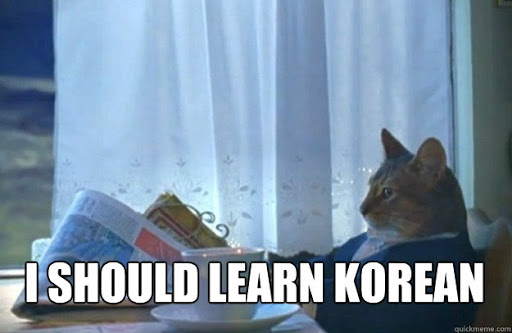
Worldwide interest in the Korean language has grown to enormous proportions — enormous, at any rate, compared to twenty years ago, when it might as well have had no proportions at all. Even I felt little desire to learn Korean back then, despite my having given precious megabytes on my Diamond Rio over to several Koreanpop songs I’d downloaded through Napster. Now, culturally phenomenized in with the West as “K-pop,” this music and its performers constitute a hugely popular motivator to study the language — second only, perhaps, to the more verbally intensive if not necessarily more complex form of the Korean television drama. That both K-pop and K-drama have accrued international fan bases of such striking avidity owes something to the concurrent development of social media. And it is there, on what Konglish calls “SNS,” that Korean-learners express their collective frustration.
It always starts so easily. Unlike Chinese, written modern Korean uses not logographic characters but a phonetic alphabet, a fact I’d picked up even when I was listening uncomprehendingly to Baby V.O.X. back in high school. (Until not so long ago it mixed Chinese characters with the phonetic alphabet in the manner of Japanese, and now I’ve come around to wishing it still did, but that’s a subject for another day.) King Sejong the Great, the fifteenth-century ruler celebrated for having commissioned the creation of hangul, literally “Korean writing,” is recorded has having described it as learnable by a smart man in a day and a stupid man in a week. That claim seems to be true as far as it goes, made though it was without consideration of the far thornier difficulties for those who have yet to understand the language itself — a subject since addressed by memes.
Read the whole thing at the Los Angeles Review of Books.